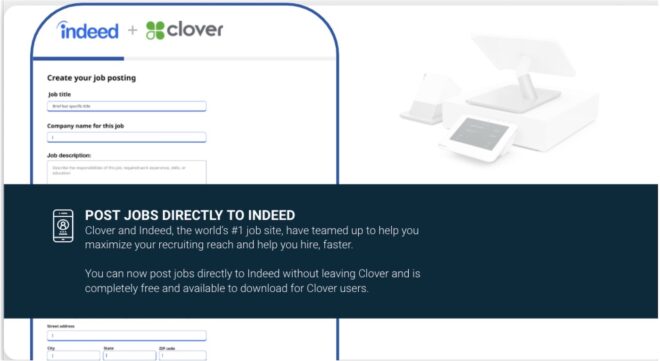How to open a bakery
Editorial Team
6 min read
If you never miss an episode of Great British Bake Off, still keep a pandemic-era sourdough starter alive, or consider yourself a pastry connoisseur, you may seriously want to explore opening a bakery. Local bakeries are beloved in neighborhoods nationwide. Moreover, starting a bakery can be enjoyable with a little patience and elbow grease–and lots of butter.
Bakeries aren’t just valued community members—they’re also part of a growing market segment. If the idea of having the kitchen as your office sounds appealing, read on. In this guide, we’ll walk you through how to start a bakery, from choosing a location to writing a business plan.
Define your vision
Bakeries can take many shapes and sizes. Narrowing down your vision to a specific bakery format will help you write a bakery business plan, identify the resources you need, and open for business. Here are a few forms your bakery could take.
- Counter-style: This is a typical bakery format in which the customer orders at the counter and there is no table service (or really, any tables at all). Baked goods are featured in display cases or on the counter.
- Home bakery: If you aren’t ready to sign a lease, you can operate a bakery from your home and sell your products at farmer’s markets or catered events. You’ll have to be creative to figure out how to sell your goods, but this option generally comes with low start-up costs.
- Cafe-hybrid: A dine-in bakery or cafe-bakery hybrid offers a combination of ordering at the counter with table service, in some variations. Your menu might include not only baked goods but also coffee, smoothies, and tea.
- Pop-up or food truck: Many baked goods travel well. Test different neighborhoods or recipes by taking your bakery to-go and serving at farmer’s markets, food fairs, or pop-up events with other restaurants.
Once you determine the form your bakery will take, it’s time to dig into the details.
Write a business bakery plan
The next step to starting a bakery is to create a formal business plan. A business plan is like a recipe: it outlines all the ingredients you need to create a fully-baked business. This document will guide you, your team, and your investors as you bring your idea to fruition.
As with other restaurant business plans, your bakery business plan should include sections such as:
- Executive summary, including your mission statement, concept proposal, and cost estimates
- Company description/overview
- Team and management summary
- Market analysis
- Sample menu
- Business operations
- Marketing plan
- Financial analysis
While these sections need to be included in your business plan, you can tweak the details of each as much as needed to reflect your vision for the bakery.
READ: How to open a business bank account
Determine what licenses are needed to start a bakery
Each state, city, and county has its own set of regulations. Check with the authorities to make sure you have the right business licenses and permits required to open a bakery in your area.
The type of bakery you plan to start will influence the licenses and permits you need, but some common ones include:
- Sales tax license: If you’re setting up a retail bakery, you’ll likely need a sales tax license, allowing you to collect state sales tax on your products.
- Food handler’s permit: Any business dealing with food must have a food handler’s permit or food safety certification. Both the business owner and any employees involved in food preparation will need this certification to demonstrate proper food handling and storage practices.
- Catering license: If your bakery business involves catering, you may need a catering or food vendor license, especially if you’re preparing and delivering the food yourself.
- Health and safety inspection: Your kitchen must pass a health and safety inspection to be certified. This is particularly important for home-based bakeries, so it’s essential to familiarize yourself with the relevant guidelines.
- Zoning permits: For home-based bakeries, check your local zoning laws to determine if you’re allowed to run a business from your residence. Additional permits, or permission from your HOA, may be required if customers are visiting your home to pick up food.
Estimate your bakery start-up costs
Start-up costs for opening a bakery vary widely, depending on the model you choose and your location. ZenBusiness offers a useful breakdown of costs according to whether you establish your business at home, open a cafe-hybrid model, or sell online.
What are the costs associated with opening a bakery? There are operational costs, such as rent, equipment, ingredients, your restaurant POS system, and utilities. Administrative costs like taxes, business permits and licenses, and insurance will also be required. While bakeries tend to be less expensive to start compared to other restaurant types, you may still need financing. Estimating your start-up costs can help you know exactly what budget you’re working with.
Read: How to open a restaurant with no money
Create your menu
Creating a bakery menu is less complex than writing a restaurant menu, but there are still a few variables to consider. Offer a variety of items (e.g., gluten-free or vegan options) while focusing on products that align with your bakery’s strengths or theme. Look for a balance between what will become your signature items–customer favorites that keep diners coming back for more–and trendy or seasonal items.
Your menu and pricing strategy are interlinked. Consider portion size, ingredients, and competition when setting prices. Include both affordable staples and premium offerings for different customer segments.
READ: How to optimize your restaurant menu to maximize profits
Design your bakery branding
This is the fun part: making your bakery stand out! Branding, marketing, and interior design can help you attract customers and create an atmosphere that boosts customer loyalty.
Your bakery branding should represent your unique selling point. Your name, packaging, logo, and color scheme all make up your overall brand. Choose something unique and memorable to help build name recognition.
Marketing is just one element of opening a bakery. And, chances are, your tasty baked goods will sell themselves. Once your hotcakes start selling like hotcakes, you’ll need to find a way to manage the customer experience. Maybe you want to use a portable POS system like the Clover Flex to reduce queues or offer self-ordering kiosks to make it easy for busy customers to pick up what they need faster. Accepting all payment types is also mission-critical for managing the morning rush and keeping customers happy.
READ: Stellar marketing and advertising examples to inspire you
Clover offers tons of resources for opening a new business, whether you choose to pursue a bakery, bookstore, barbershop, or anything in between. Check out Clover’s bakery POS system to learn more about how to open a bakery. And, if you have questions, be sure to reach out to a Clover Consultant.
Related Posts
How top food trucks pick the best spots
Speed up hiring with Indeed
Popular Topics
Stay in touch
Sign up and learn more about Clover.
Thank you for your subscription!
More posts about starting a small business
eBook





